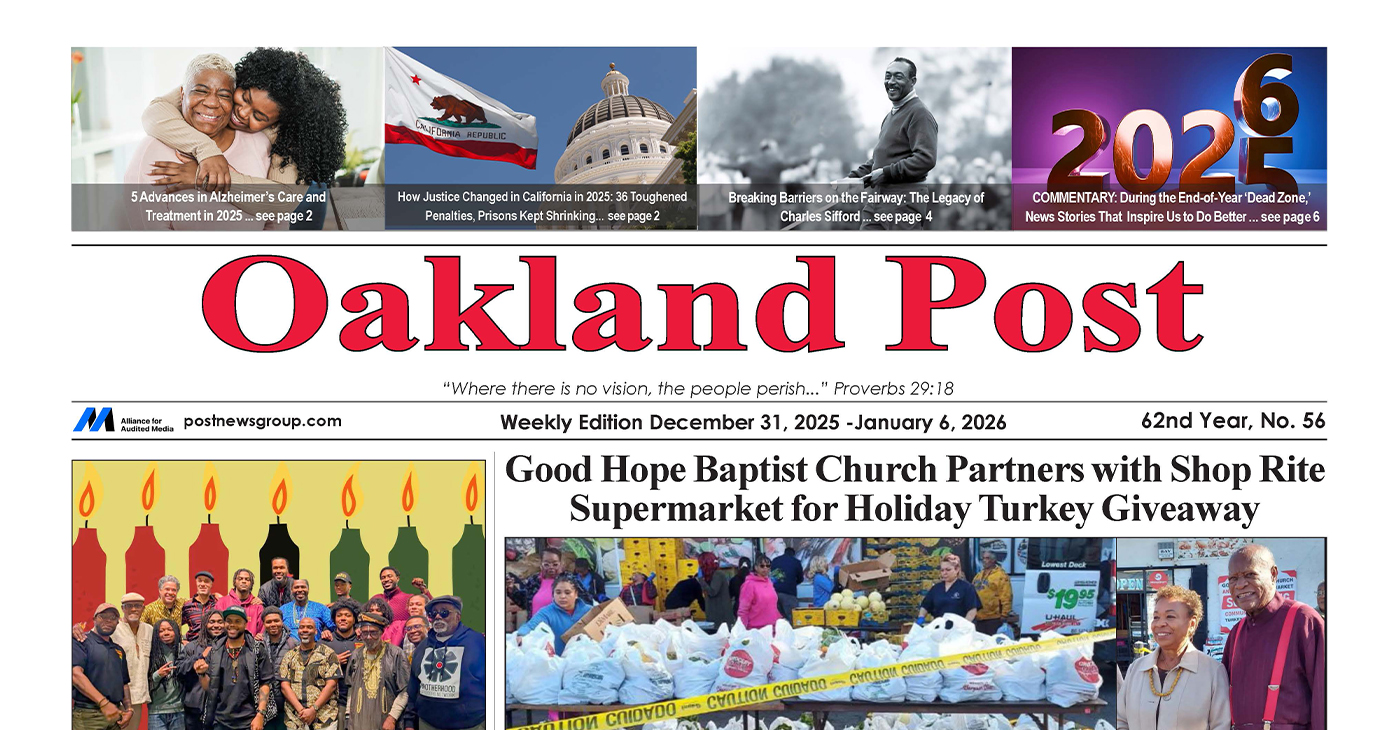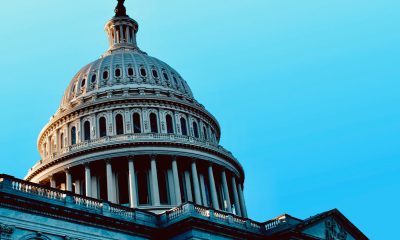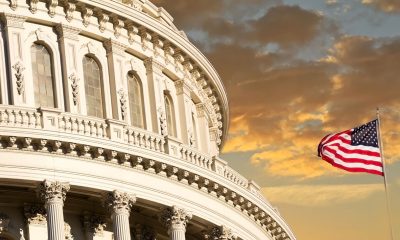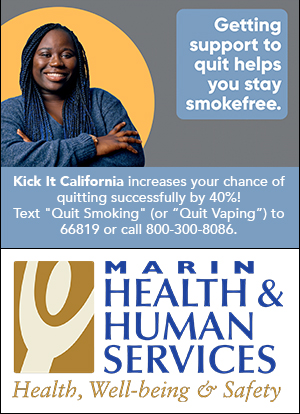Community
Medical Professionals Call on Oakland School Leaders to Increase COVID-19 Protections for Children, Teachers and Families
The following letter was sent by medical professionals and community leaders on Aug. 9, 2021 to Oakland the Oakland Unified School District Superintendent and school board members.

The following letter was sent by medical professionals and community leaders on Aug. 9, 2021 to Oakland the Oakland Unified School District Superintendent and school board members.
Oakland Unified School District appears to be on the verge of reopening its schools to full capacity, even though the best available data indicates that the spread of COVID‐19 is quickening and expanding, particularly in several of the city’s most vulnerable neighborhoods.
Because marginalized communities suffer compromised health even in the best of times, it appears inevitable that Oakland’s Black and Brown youth and their families will disproportionately bear the brunt of new infections, and increased morbidity and mortality.
We write to pose some essential questions, the answers to which will reflect the degree to which elected leaders of the school board are willing and prepared to take the steps necessary to protect the well‐being of some of the most vulnerable among us.
Choices the school board makes with respect to COVID‐19 cannot be divorced from the demands for equity that are sweeping the nation for the simple fact that health vulnerabilities of our communities of color can, in many instances, be traced back to and are deeply rooted in generations of unjust oppression, unequal access to opportunity, and undeniable neglect at the hands of both the public and private sectors.
To be sure, OUSD’s actions in the 2020‐21 school year to quickly pivot to distance and then hybrid learning are to be commended. Swift action to suspend in‐person instruction and equip students for distance learning surely saved lives, and courageously modeled for an entire nation principle of self‐sacrifice and equity.
But these important achievements risk being squandered.
First, an adequate plan for regular and targeted COVID‐19 testing has yet to be implemented.
“Recommended testing” at one of “10 OUSD locations” on a voluntary basis for symptomatic and exposed teachers, students and families, is wholly inadequate.
That teachers are not required to undergo routine testing or demonstrate proof of vaccination despite spending hours indoors (especially) with unvaccinated children is unfathomable, particularly since the Delta viral strain is transmitted more easily modeling in support of that case.
Only when this is done, can the public ‐- the individuals, organizations, businesses, agencies and elected officials that rely upon the expertise of public health professionals ‐- adequately assess their options and make decisions appropriate to their needs and consistent with their appetite for risk.
If Oakland parents and students must choose between at‐home/distance learning and
exposure to a serious illness that could prove fatal to themselves or loved ones, then they should be provided information about the relative risks of their options so that they can debate and shape the types and timing of trade‐offs being asked of them during this ordeal.
At a minimum we insist that the school board require:
Symptomatic students, staff and teachers isolate and test negative before presenting to any
school site
Every school site have supplies and staff for onsite COVID‐19 testing
All unvaccinated teachers and staff undergo at least weekly mandatory testing
All unvaccinated teachers and staff wear N95 masks at all times
The following data points be included on the OUSD Dashboard:
- Ventilation strategy being utilized at each school site
- Distancing guideline(s) being observed at each school site for each common area
(classrooms, hallways, multi‐use rooms) - Percentage of vaccinated teachers and staff at each school site
- Notification of each COVID‐19 outbreak with number of student and teacher/staff cases
As community leaders and physicians. we stand ready to serve as not only accountability partners, but as a resource to help ensure the health and well‐being of our dedicated teachers and school staff, and the safety of our children.
Please do not hesitate to reach out to us for additional information or if we can be
of assistance. We look forward to hearing from you.
Signed:
Sherilynn Cooke, MD, president, Sinkler Miller Medical Association
Noha Aboelata, MD, CEO, Roots Community Health Center
Donna White Carey, MD, executive pastor, True Vine Ministries
Aisha Mays, MD, director of Adolescent and School Based Programs, Roots Community Health Center
Kim F. Rhoads, MD, MS, MPH, Assoc. Prof. of Epidemiology & Biostatistics, Founding Dir., Umoja Health
Damon Francis, MD, Health Committee, Brotherhood of Elders Network
Gregory Hodge, chief network officer, Brotherhood of Elders Network
Pecolia Manigo Awobodu, executive director, Bay Area Parent Leadership Action Network
Donald Frasier, executive director, Building Opportunities for Self‐Sufficiency
Pastor Michael McBride, national director, LIVE FREE Project
Carolyn (CJ) Johnson, CEO, Black Cultural Zone Community Development Corporation
Candice Elder, founder and executive Director, East Oakland Collective
Tanya Dennis, Oakland Frontline Healers Coalition
The Oakland Post’s coverage of local news in Alameda County is supported by the Ethnic Media Sustainability Initiative, a program created by California Black Media and Ethnic Media Services to support community newspapers across California
Activism
Oakland Post: Week of December 31, 2025 – January 6, 2026
The printed Weekly Edition of the Oakland Post: Week of – December 31, 2025 – January 6, 2026

To enlarge your view of this issue, use the slider, magnifying glass icon or full page icon in the lower right corner of the browser window.
Activism
Big God Ministry Gives Away Toys in Marin City
Pastor Hall also gave a message of encouragement to the crowd, thanking Jesus for the “best year of their lives.” He asked each of the children what they wanted to be when they grow up.

By Godfrey Lee
Big God Ministries, pastored by David Hall, gave toys to the children in Marin City on Monday, Dec. 15, on the lawn near the corner of Drake Avenue and Donahue Street.
Pastor Hall also gave a message of encouragement to the crowd, thanking Jesus for the “best year of their lives.” He asked each of the children what they wanted to be when they grew up.
Around 75 parents and children were there to receive the presents, which consisted mainly of Gideon Bibles, Cat in the Hat pillows, Barbie dolls, Tonka trucks, and Lego building sets.
A half dozen volunteers from the Big God Ministry, including Donnie Roary, helped to set up the tables for the toy giveaway. The worship music was sung by Ruby Friedman, Keri Carpenter, and Jake Monaghan, who also played the accordion.
Big God Ministries meets on Sundays at 10 a.m. at the Mill Valley Community Center, 180 Camino Alto, Mill Valley, CA Their phone number is (415) 797-2567.
Activism
First 5 Alameda County Distributes Over $8 Million in First Wave of Critical Relief Funds for Historically Underpaid Caregivers
“Family, Friend, and Neighbor caregivers are lifelines for so many children and families in Alameda County,” said Kristin Spanos, CEO, First 5 Alameda County. “Yet, they often go unrecognized and undercompensated for their labor and ability to give individualized, culturally connected care. At First 5, we support the conditions that allow families to thrive, and getting this money into the hands of these caregivers and families at a time of heightened financial stress for parents is part of that commitment.”

Family, Friend, and Neighbor Caregivers Can Now Opt Into $4,000 Grants to Help Bolster Economic Stability and Strengthen Early Learning Experiences
By Post Staff
Today, First 5 Alameda County announced the distribution of $4,000 relief grants to more than 2,000 Family, Friend, and Neighbor (FFN) caregivers, totaling over $8 million in the first round of funding. Over the full course of the funding initiative, First 5 Alameda County anticipates supporting over 3,000 FFN caregivers, who collectively care for an estimated 5,200 children across Alameda County. These grants are only a portion of the estimated $190 million being invested into expanding our early childcare system through direct caregiver relief to upcoming facilities, shelter, and long-term sustainability investments for providers fromMeasure C in its first year. This investment builds on the early rollout of Measure C and reflects a comprehensive, system-wide strategy to strengthen Alameda County’s early childhood ecosystem so families can rely on sustainable, accessible care,
These important caregivers provide child care in Alameda County to their relatives, friends, and neighbors. While public benefits continue to decrease for families, and inflation and the cost of living continue to rise, these grants provide direct economic support for FFN caregivers, whose wages have historically been very low or nonexistent, and very few of whom receive benefits. As families continue to face growing financial pressures, especially during the winter and holiday season, these grants will help these caregivers with living expenses such as rent, utilities, supplies, and food.
“Family, Friend, and Neighbor caregivers are lifelines for so many children and families in Alameda County,” said Kristin Spanos, CEO, First 5 Alameda County. “Yet, they often go unrecognized and undercompensated for their labor and ability to give individualized, culturally connected care. At First 5, we support the conditions that allow families to thrive, and getting this money into the hands of these caregivers and families at a time of heightened financial stress for parents is part of that commitment.”
The funding for these relief grants comes from Measure C, a local voter-approved sales tax in Alameda County that invests in young children, their families, communities, providers, and caregivers. Within the first year of First 5’s 5-Year Plan for Measure C, in addition to the relief grants to informal FFN caregivers, other significant investments will benefit licensed child care providers. These investments include over $40 million in Early Care and Education (ECE) Emergency Grants, which have already flowed to nearly 800 center-based and family child care providers. As part of First 5’s 5-Year Plan, preparations are also underway to distribute facilities grants early next year for child care providers who need to make urgent repairs or improvements, and to launch the Emergency Revolving Fund in Spring 2026 to support licensed child care providers in Alameda County who are at risk of closure.
The FFN Relief Grants recognize and support the essential work that an estimated 3,000 FFN caregivers provide to 5,200 children in Alameda County. There is still an opportunity to receive funds for FFN caregivers who have not yet received them.
In partnership with First 5 Alameda County, Child Care Payment Agencies play a critical role in identifying eligible caregivers and leading coordinated outreach efforts to ensure FFN caregivers are informed of and able to access these relief funds.FFN caregivers are eligible for the grant if they receive a child care payment from an Alameda County Child Care Payment Agency, 4Cs of Alameda County, BANANAS, Hively, and Davis Street, and are currently caring for a child 12 years old or younger in Alameda County. Additionally, FFN caregivers who provided care for a child 12 years or younger at any time since April 1, 2025, but are no longer doing so, are also eligible for the funds. Eligible caregivers are being contacted by their Child Care Payment Agency on a rolling basis, beginning with those who provided care between April and July 2025.
“This money is coming to me at a critical time of heightened economic strain,” said Jill Morton, a caregiver in Oakland, California. “Since I am a non-licensed childcare provider, I didn’t think I was eligible for this financial support. I was relieved that this money can help pay my rent, purchase learning materials for the children as well as enhance childcare, buy groceries and take care of grandchildren.”
Eligible FFN caregivers who provided care at any time between April 1, 2025 and July 31, 2025, who haven’t yet opted into the process, are encouraged to check their mail and email for an eligibility letter. Those who have cared for a child after this period should expect to receive communications from their child care payment agency in the coming months. FFN caregivers with questions may also contact the agency they work with to receive child care payments, or the First 5 Alameda help desk, Monday through Friday, from 9 a.m. to 5:00 p.m. PST, at 510-227-6964. The help desk will be closed 12/25/25 – 1/1/26. Additional grant payments will be made on a rolling basis as opt-ins are received by the four child care payment agencies in Alameda County.
Beginning in the second year of Measure C implementation, FFN caregivers who care for a child from birth to age five and receive an Alameda County subsidized voucher will get an additional $500 per month. This amounts to an annual increase of about $6,000 per child receiving a subsidy. Together with more Measure C funding expected to flow back into the community as part of First 5’s 5-Year Plan, investments will continue to become available in the coming year for addressing the needs of childcare providers in Alameda County.
About First 5 Alameda County
First 5 Alameda County builds the local childhood systems and supports needed to ensure our county’s youngest children are safe, healthy, and ready to succeed in school and life.
Our Mission
In partnership with the community, we support a county-wide continuous prevention and early intervention system that promotes optimal health and development, narrows disparities, and improves the lives of children from birth to age five and their families.
Our Vision
Every child in Alameda County will have optimal health, development, and well-being to reach their greatest potential.
Learn more at www.first5alameda.org.
-

 Bay Area3 weeks ago
Bay Area3 weeks agoPost Salon to Discuss Proposal to Bring Costco to Oakland Community meeting to be held at City Hall, Thursday, Dec. 18
-

 Activism3 weeks ago
Activism3 weeks agoMayor Lee, City Leaders Announce $334 Million Bond Sale for Affordable Housing, Roads, Park Renovations, Libraries and Senior Centers
-

 Activism4 weeks ago
Activism4 weeks agoOakland Post: Week of December 10 – 16, 2025
-

 Activism3 weeks ago
Activism3 weeks agoOakland School Board Grapples with Potential $100 Million Shortfall Next Year
-

 Arts and Culture3 weeks ago
Arts and Culture3 weeks agoFayeth Gardens Holds 3rd Annual Kwanzaa Celebration at Hayward City Hall on Dec. 28
-

 Activism3 weeks ago
Activism3 weeks ago2025 in Review: Seven Questions for Black Women’s Think Tank Founder Kellie Todd Griffin
-

 Advice3 weeks ago
Advice3 weeks agoCOMMENTARY: If You Don’t Want Your ‘Black Card’ Revoked, Watch What You Bring to Holiday Dinners
-

 Activism3 weeks ago
Activism3 weeks agoAnn Lowe: The Quiet Genius of American Couture
























































